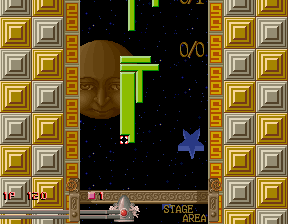Game Boy Dmg Game Screenshot
Where to get a replacement screen for dmg-01? I recently picked up my first original game boy at a thrift store and it works great, except for a section of the screen shows up blank. I have gotten replacements for GBAs on eBay before but I couldn't find any for the DMG that weren't backlit mods. New, scratch free glass replacement lens for Game Boy DMG-01 Learn More. GLASS Game Boy DMG-01 Replacement Lens / Screen Cover (Play It Loud) $3.95 As low as: $3.59. Add to Wishlist Add to Compare; New, scratch free glass replacement lens for Game Boy DMG-01. Coloring matches the 'Play It Loud' series.
A DMG Game Boy emulator for Windows written in C++, using SDL2 for the graphics, input and audio.
(Despite its name, it in no way attempts to be better than other emulators out there, it's just a name I came up with.)
Nintendo Game Boy mods and other customization products for vintage hand-held electronics. Find modifications for the Game Boy DMG, Game Boy Color, Game Boy Pocket, Game Boy Advance and SEGA Game Gear. Top modifications include Game Boy Backlight, Game Boy Color Backlight, Game Boy Advance Backlight, AGS-101 and IPS LCDs. Game Boy Bivert/hex mods. Screen Lenses - DMG, Reproduction Screen Lenses for the Original Nintendo GameBoy - DMG-01The Custom Screen Lenses (without text) are a higher quality material and will be more Scratch ResistantGlass lenses are also available for the best clarity and dura. Get the best deals on Nintendo Game Boy Replacement Parts and Tools when you shop the largest online selection at eBay.com. Free shipping on many items Browse your favorite brands. 30 pcs Replacement Battery Contacts for Nintendo Game Boy Original (GameBoy DMG) $7.00. $2.70 shipping. Brand: Unbranded.
Source code and building
gbpp.cpp contains the main application logic and loop, components/gbcpu.cpp the CPU (Central Processing Unit) and timer emulation, components/gbapu.cpp the APU (Audio Processing Unit) and sound emulation, components/gbppu.cpp the PPU (Picture Processing Unit) emulation and components/gbmem.cpp the RAM (Random-Access Memory), ROM (Read-Only Memory) and MBC1 (Memory Bank Controller 1) emulation. Rufus download mac.
Requires SDL2 to be installed and SDL2.dll to be in the same directory as gbpp.cpp. It can then be compiled for Windows using MinGW with
gbpp can (and actually should) be run from the command line, and it accepts flags. Running it with no flags, -h or --help will print the list of accepted arguments. The message is the following:
Note that starting without a path to the game ROM will exit immediately with the message

Accuracy
Emulation speed is more or less accurate but some instructions are still incorrectly/not implemented and audio is a bit here-and-there.
It passes some of blargg's instruction test ROMs but the cpu_instrs test hangs on test 03. It can run Tetris, Super Mario Land, Is that a demo in your pocket? and some other games or demos (mostly) fine, apart from a few visual artifacts and inaccuraties.
The emulated CPU runs most of the time at around 4MiHz on an Intel Core i7-8550U at 1.80GHz.
User interface
gbpp's UI consists of two windows, one for the emulated Game Boy's screen and one for debug (which starts hidden but can be shown with D). The main window's size is 480x432 pixels, which is three times the resolution of the Game Boy's screen.
In the debug window, gbpp renders the whole background (32x32 8x8 tiles, palette mapped) and the tilemap from addresses 8000h to 9800h. It also shows the current value for each register, the last interrupt that was serviced, the current selected ROM bank, the scanline location and a disassembly from addresses PC - 30 to PC + 30.
Game Boy Dmg Game Screenshot 2017
When exiting the emulator (either by pressing escape or by closing the window) the emulator will dump the five last instructions, the state of the registers as well as the top 10 bytes on the stack.
Screenshots
Images from Tetris and Super Mario Land.
Game Boy Dmg Game Screenshot Free
This is the debugger view:
Controls
The controls are mapped to the following keys:
| Keyboard key(s) | Game Boy button |
|---|---|
| A | A |
| S | B |
| Arrow keys | D-pad |
| Return | Start |
| Backspace | Select |
In addition to those, there are some other keys that do useful things:
| Keyboard key(s) | Function |
|---|---|
| M | Put the emulator into step-by-step mode |
| Space | Advance by one instruction if in step-by-step mode |
| W | Print a visual representation of the wave channel's samples |
| R | Reset the emulated CPU |
| D | Toggle the debugger/disassembler view (hidden by default) |
| 1, 2, 3 and 4 | Toggle the Game Boy's respective sound channel |
| Escape | Exit |

Right now these keys are hardcoded and cannot be configured (except by manually editing the source code).
Audio
While the emulator does output sound, it could be more accurate. There are occasional pops and clicks and it does not support noise frequency control or pulse 1's frequency sweep. However, Super Mario Land's and Tetris' soundtracks play mostly fine apart from shorter note durations and ugly noise emulation.
Things to add in the future
- Fix the CPU, which has some opcodes slightly broken at the moment
- Fix & finish the APU, as the sound sometimes pops and clicks and not everything is supported
- Emulated window support (essentially a second movable background layer)
- Proper background/window/sprite rendering priority support
- More debug options, such as an on-the-fly RAM reader/writer
Game Boy Dmg Game Screenshot Mac
Assembler and disassembler
Additionally there are two Python scripts in the repository, one for assembling (assembler.py) and one for disassembling (disassembler.py). Documentation on those is still TODO.